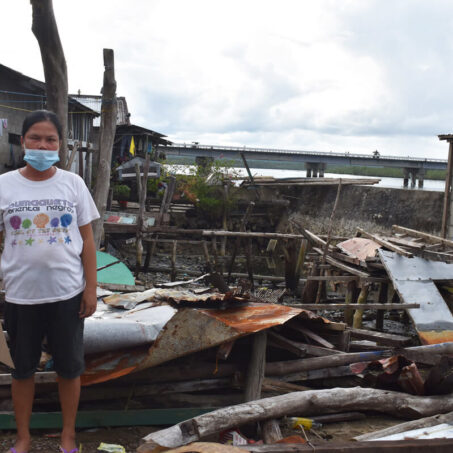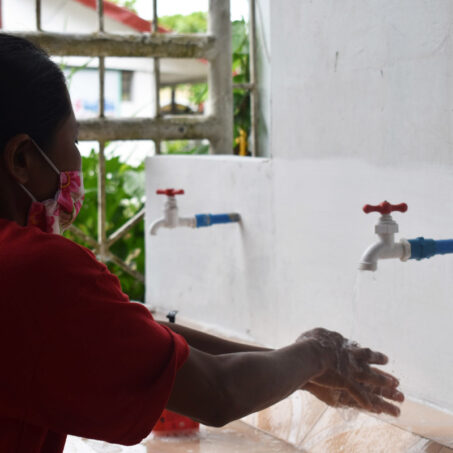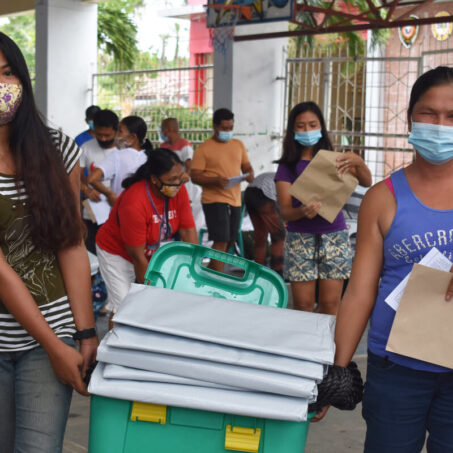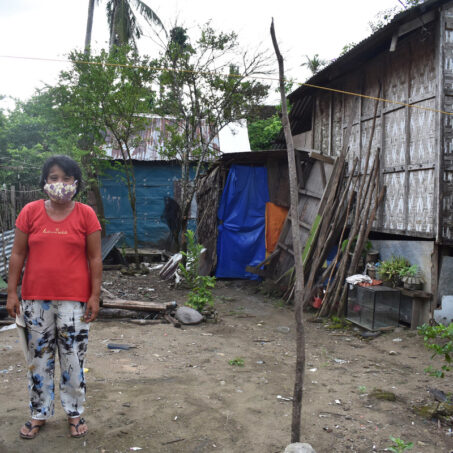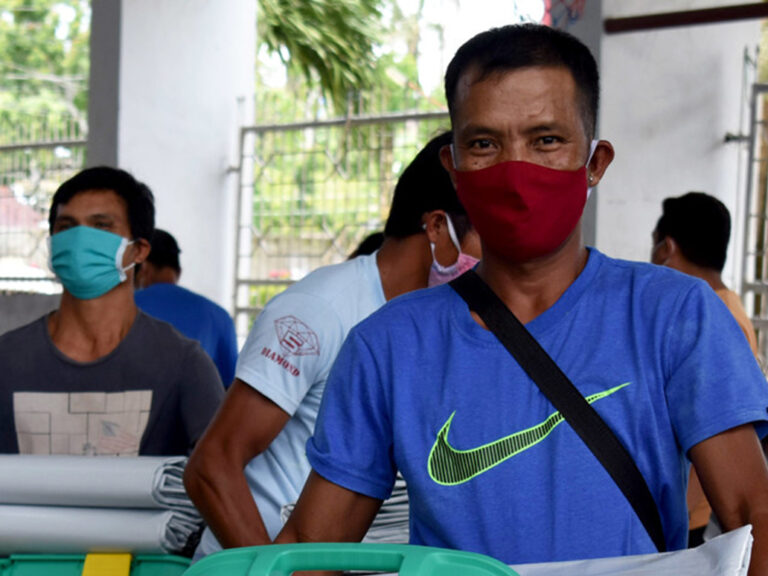Typhoon Vongfong (known locally as Ambo) swept through the Philippines in May. Torrential rains brought devastating damage, with nearly half a million people affected.
We partnered with Terres des Hommes (TdH) to support families who have been worst hit by the disaster. Read more about what happened, how we’ve been helping, and facts about typhoon Vongfong.
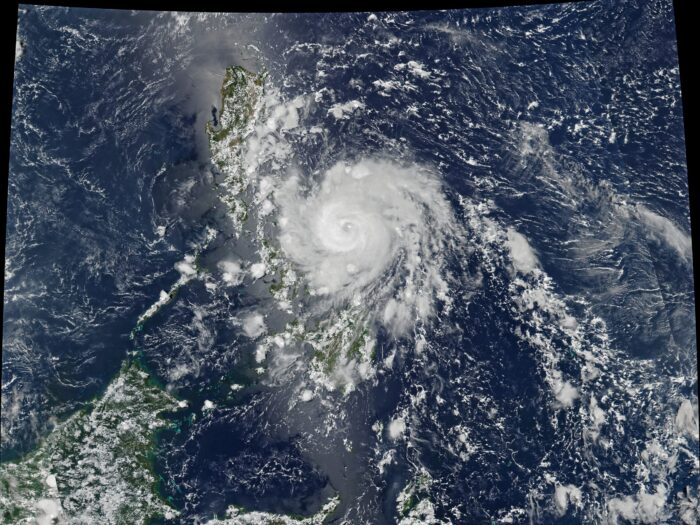

What Happened?
Typhoon Vongfong, known locally as Ambo, made landfall on 14 May in Eastern Samar, Philippines, as a Category 3 storm.
The powerful Typhoon brought torrential, rains, washing away 3,000 homes, and severely damaging a further 17,000.
In total, over 380,000 people were affected.
Hurricanes Explained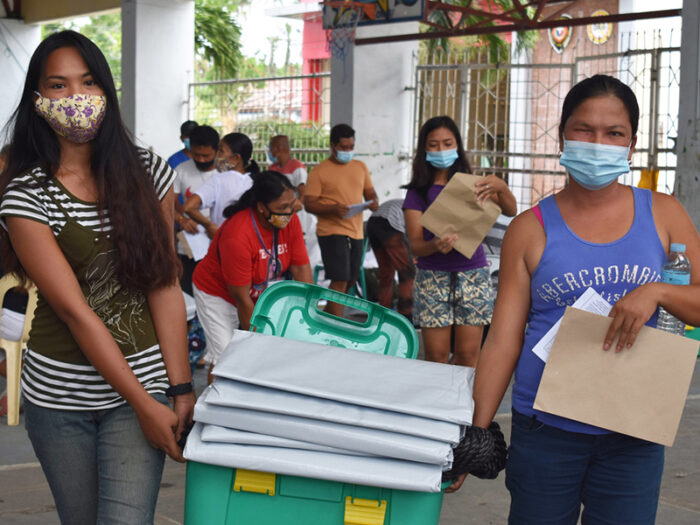
How did ShelterBox Help?
ShelterBox Operations Philippines (SBOP) partnered with Terres des Hommes organisation (TdH) to support families affected the most.
Our project aimed to decongest evacuation centres, providing some private space for families to allow them to protect themselves from coronavirus.
Families who were severely affected by Vongfong were forced to live in evacuation centres or to stay with relatives. Tarpaulins and rope, as well as additional household items will enable them to rebuild their homes and get back on the road to normality.
Together with our partner, we have supported families across 19 barangays (villages) whose homes have been completely flattened. Communities in these areas had not received any support from other humanitarian organisations after the disaster. Aid distributions and post-distribution monitoring activities are now complete.
Hurricanes Explained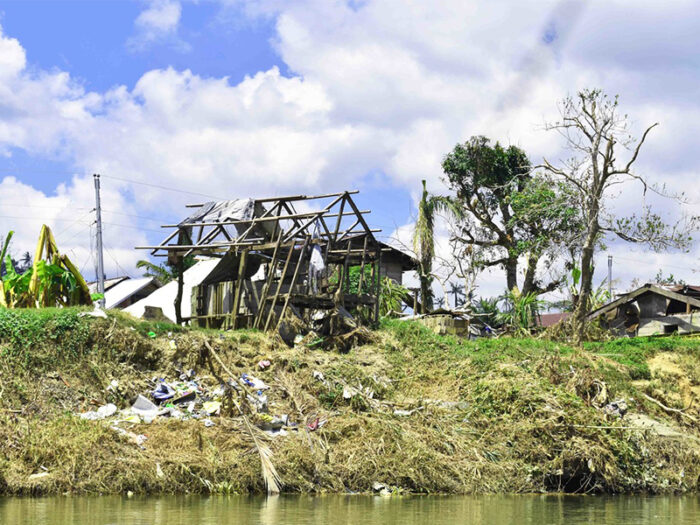
Typhoon Vongfong (Ambo) Facts
- On 15 May, the eye of the typhoon carried maximum sustained winds of 125 km/h near the centre and gusts of up to 165 km/h making further landfalls in Northern Samar, Masbate and Quezon provinces (Reliefweb).
- The combination of high winds, sustained heavy rainfall and storm surges has impacted vulnerable communities in the Eastern Visayas, Bicol and Southern Luzon which were also heavily affected by Typhoon Kammuri (local name Tisoy) in December 2019.
- 3,000 homes were destroyed by this latest Typhoon, and a further 17,000 homes were damaged. In total, over 380,000 people were affected.
- Vongfong is the first typhoon to hit the Southeast Asian nation in 2020. Vongfong is also the second Philippines disaster ShelterBox is responding to this year. We recently supported families affected by the eruption of Taal volcano.
Why do so many disasters happen in the Philippines?
Warm ocean waters, low-lying coasts, poverty and geography help explain why the Philippines is so prone to disasters.
Located just above the equator, the Philippines faces the western Pacific without much else in the way to take the force of storms before they make landfall. Those warm, equatorial waters power about 20 typhoons a year.
In recent decades, a lot of people have flocked to risky, low-lying islands – in search of cheap housing.
The rapidly constructed housing and inadequate evacuation plans mean that the local population is left vulnerable when disaster strikes. Existing houses are unable to withstand the extreme weather conditions.
The country’s location on the Pacific Ring of Fire also means it is prone to earthquakes, volcanic eruptions, as well as tropical storms and typhoons.
The country also experiences monsoon rains across the country which can lead to flooding and landslides.
